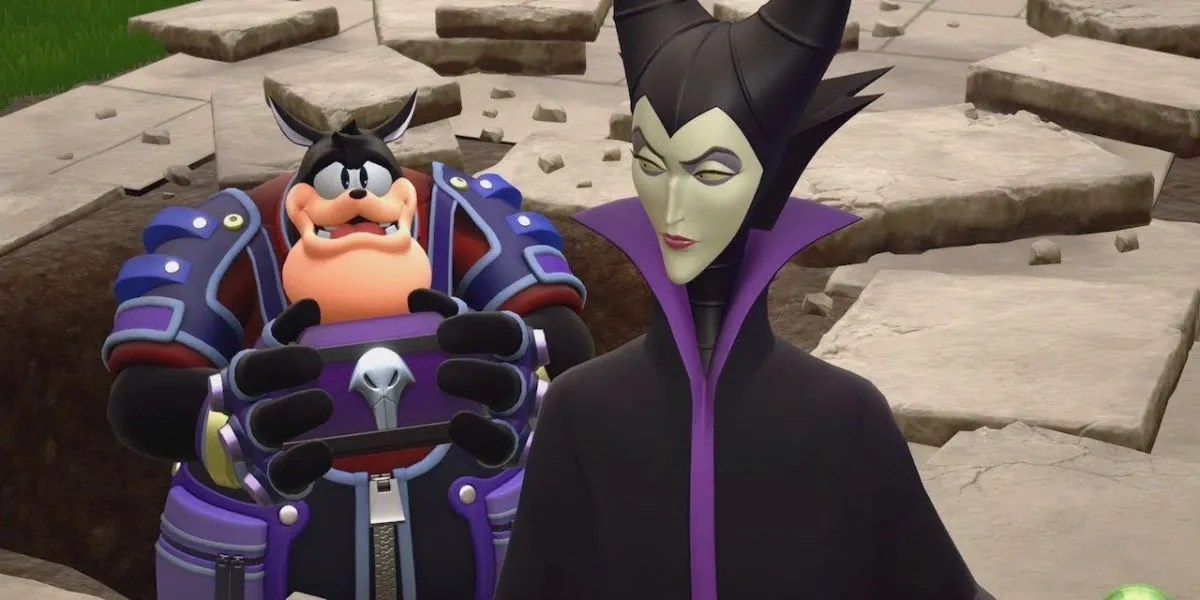Summary
Sometimes, video game villains fall into the “enemies to friends” pipelines with their respective heroes. Redemption arcs have gotten popular, and sometimes the best way for fans to see more of their favorite baddies is for them to join the opposite team.
Then there are times when villains and heroes will simply call a temporary truce, usually because of a much greater threat to deal with. Once that’s settled, the two of them can go back to their regularly scheduled rivalry. Most villains like to be theonlyworld-ending threat in town, after all. Here are some villains who either began to turn a new leaf or who simply decided that the hero was an enemy of their enemy.

InJustice For All, Phoenix Wright came across Franziska von Karma, the prodigious daughter of the diabolical Manfred von Karma. Raised to be a ruthless perfectionist, Franziska strove to live up to her father’s fearsome reputation and failed. Twice. Even when she finally defeated Wright in court, the victory left her feeling hollow.
So Wright was beyond surprised to see Franziska return toward the end ofTrials and Tribulations. While she was still her arrogant, whip-wielding self, Franziska was still willing to help out during the final case. Without her lust for vengeance, her sharp mind allowed her to be a useful asset, with Wright himself surprised at her sudden character growth.

2Maleficent
The Mistress Of All Evil Calls A Truce
In the firstKingdom Heartsgame, Maleficent was the big baddie she was made to be. She was the sinister voice in Riku’s ear,poisoning his mindinto turning against his lifelong friend Sora. And it was her Heartless that Sora had to battle his way through for most of the game. Even if she ended up being just another pawn to Master Xehanort, Maleficent’s darkness was still a force to be reckoned with.
ByKingdom Hearts 2, Maleficent managed to resurrect herself, but her power and following had greatly diminished. On top of that, she was faced with a much bigger threat: Organization XIII. She couldn’t pull off any evil schemes of her own with them in the way, and so she decided to (reluctantly) help Sora defeat them. Her help during the World That Never Was segment of the game was probably the dynamic duo that no one could have seen coming.

These days, Bowser and Mario get invited to a lot of the same social gatherings. From go-karts to tennis to baseball, these arch-enemies sometimes feel more like rivals stuck on opposite ends of the same social circles. However, this civility wasn’t always the case. In fact, one of the earliest examples of Mario and Bowser putting their differences aside was back in 1996 withSuper Mario RPG.
The Smithy Gang has rolled into the Mushroom Kingdom, and Bowser finds himself pushed aside. He’s lost his castle, his armies, and even his chance to kidnap Princess Peach to these intergalactic thugs. He doesn’t want to admit it, but he needs Mario’s help. As he joins the party, it’s hard not to feel at least a little bad for the guy.

InOcarina of Time, the twin witches Koume and Kotake were the ones responsible for creating the menace that was Ganondorf. They also imprisoned Nabooru, one of the seven sages, as their mindless minion for seven years. Link needed to fight tooth and nail to defeat them in their combined form, Twinrova.
So imagine his surprise inMajora’s Maskwhen he arrives inTerminato find Koume and Kotake living it up in a poisoned swamp. Here, they’re surprisingly friendly, letting Link play their boat ride minigame and even selling him potions (complete with a free empty bottle to store them in). The game treats these cooky old ladies like Link’s never met them before, yet everything about their appearance, names, and constant bickering with each other are exactly the same. Perhaps they decided to simply start over somewhere new?

In the originalGod of Wartrilogy, Helios was just another divine casualty in Kratos’s vengeful crusade against the gods. The sun god tried to warn Kratos about the consequences of taking down Olympus, but Kratos wasn’t interested in a lecture. He ended up ripping Helios’s head off in one of the trilogy’smost iconic kills.
That was the last gamers had seen of Helios until theValhallaDLCforRagnarokdropped. As Kratos contends with his past self from his Greek days, players expected he’d be haunted by notable figures like Zeus or Athena. Helios’s head taking the place of Mimir’s was certainly a surprise. This literal mouthpiece helps Kratos navigate puzzlesandhis inner demons throughout the DLC in the most hostile, passive-aggressive ways he can.

GlaDOS is one of the most iconic video game villains of the 21st century. Her deranged testing throughout the firstPortalgame, combined with her stellar comedic line delivery, made her equally memorable and menacing. ByPortal 2, she’s revealed to still be alive, and Chell must once again knock her nemesis offline to escape the facility. But there’s a twist when GlaDOS gets replaced by another AI, the once-harmless Wheatley. As he goes mad with power, GlaDOS gets shoved into a potato battery and chucked aside.
From then on, GlaDOS and Chell areforced to work togetherto take Wheatley down before his antics destroy the entire facility. GlaDOS gets some much-unexpected character development here, even becoming somewhat fond of her former captive. This camaraderie pays off by the end of the game when GlaDOS decides to uphold her end of the bargain and finally allows Chell to leave.